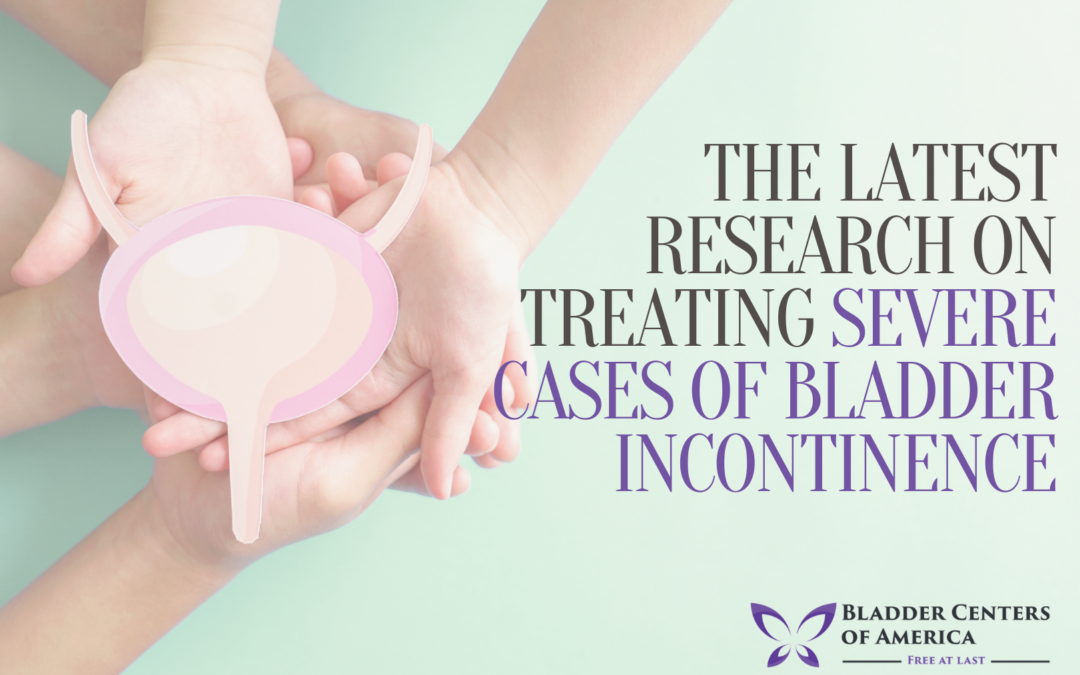Severe bladder incontinence can be an extremely difficult condition to live with. However, the latest research is showing promising results in treating the disorder using new and improved therapies. Some of these treatments involve medications, lifestyle changes, and even surgery; all of which have been found to help alleviate symptoms and improve the quality of life for those affected. With a continued focus on finding more successful treatment methods, there is hope for those living with severe bladder incontinence.
Definition and overview of bladder incontinence
Bladder incontinence is a condition that affects everyday life and involves involuntary urine leakage. It can range from slight leaking when sneezing or coughing, to a complete inability to control the bladder muscles.
The severity and type of this condition vary between individuals, but many people experience both stress urinary incontinence (SUI) and urge urinary incontinence (UUI).
While SUI is caused by increased pressure on the bladder, UUI is triggered by an overactive bladder muscle. Treatment plans focus on lifestyle adaptations, such as pelvic floor exercises, and medications that help relax the bladder muscle. In more extreme cases, surgery may be necessary to address the issue.
Overview of severity scale used to diagnose bladder incontinence
Bladder incontinence is typically classified according to a severity scale which assesses the degree to which symptoms interfere with everyday life. Severity is measured on a scale from 0 to 4, ranging from minor leaking up to complete loss of control over the bladder muscles.
This can help medical professionals better diagnose and treat the condition. A more holistic approach combines the severity scale with lifestyle changes and medications to create an individualized treatment plan that will best suit the patient’s needs.
Causes
Bladder incontinence can be caused by both anatomical and lifestyle-related factors. Issues with the muscles and nerves in the pelvic floor can cause involuntary urine leakage, as well as age-related changes such as weakened pelvic muscles or enlarged prostate.
Lifestyle factors that may contribute to bladder incontinence include excessive alcohol consumption, smoking, and being overweight or obese. It is important to note that while certain lifestyle habits can make this condition worse, they do not cause it. The most effective way to manage bladder incontinence is to work with your doctor to create a personalized treatment plan tailored to your specific needs.
Treatment Options
Medication options
There are many medications available to help manage the symptoms of bladder incontinence. Alpha-blockers, anticholinergics, tricyclic antidepressants, and topical estrogen creams are all commonly used to reduce or eliminate involuntary leakage.
Other medications may also be prescribed depending on the individual’s needs. It is important to note that it can take several weeks for these medications to work as intended, so patience and open communication between patient and doctor is key to ensuring optimal results.
Non-invasive treatments such as Kegels exercises, pelvic therapy, electrical stimulation, and biofeedback therapy
Non-invasive treatments are available for those who prefer to try and manage bladder incontinence without the use of medications. Kegel exercises involve contracting and relaxing the muscles of the pelvic floor to strengthen them and improve bladder control.
Pelvic floor therapy, electrical stimulation, and biofeedback therapy are all also used extensively to treat bladder incontinence. These treatments can be extremely effective at reducing symptoms over time, though exact results will vary between individuals.
Modern research into treating severe cases of bladder incontinence
There is a great deal of ongoing research and development into new medications and therapies for the treatment of bladder incontinence. Many studies are focused on creating more effective and longer-lasting treatments, as well as exploring methods of delivering these treatments with minimal side effects. This work is critical to helping those afflicted with this condition get the best possible care, so they can lead happier healthier lives.
The latest findings in bladder incontinence research are focused on finding treatments for severe cases of the condition. These studies look at everything from medications to lifestyle changes and develop new therapies that target the underlying cause of the problem. With continued progress, hopefully, soon more people with bladder incontinence will have access to improved treatments and care options.

